|
|
|
|
共生 腺點植物與螞蟻 Symbiosis - Gland Plants and Ants |
|
|
雜食性的螞蟻是群體生活,數量多,食量大,所經過的地方其他生物都退避三分,有些樹木便利用它這個特性而利誘它們到來保護免受蟲害. 大戟科和蘇木科的多種植物都有腺點,放出甜液,吸引附近螞蟻日夜巡邏,互利共生.大戟科油桐屬的兩個腺點長在葉基位置,其中木油樹的腺點更長在每一個葉片角位上.蘇木科的多種決明屬植物的腺點長在羽狀復葉間的枝條上. Omnivorous ants are social insects. They live together in big quantity forming colonies and they are fressers. Everyone gives way whenever and wherever they pass through. Some trees take advantage of this characteristic and lure the ants to protect them against pests. Many plants in the families of Euphorbiaceae and Caesalpiniaceae have glands which secrete nectar and attract the nearby ants to be their day-and-night patrol for mutualism. The two gland points of Euphorbiaceae vernicia lour. are in the leaf base. Those of Wood-oil tree (Aleurites molucana) are even on every corner of the leaf blade. The gland points of Senna Mill. of Caesalpiniaceae grow on the rachises of the pinnates. *translated by Mary Chung |
|
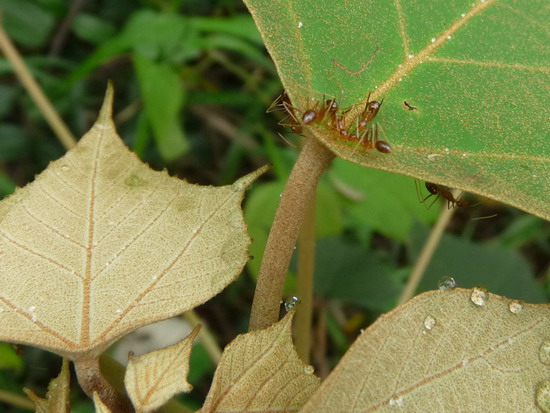 大戟科.白楸 Euphorbiaceae. Turn-in-the-wind (Mallotus paniculatus) |
|
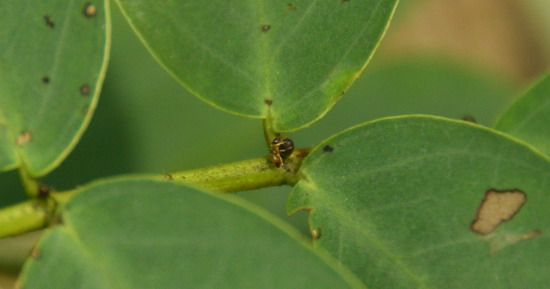 蘇木科.黃槐決明 Caesalpiniaceae: Sunshine tree (Cassia surattensis) |
|
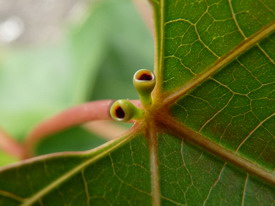 大戟科.木油樹Euphorbiaceae. Wood oil tree (Aleurites molucana) |
 大戟科.石栗Euphorbiaceae. Candlenut tree (Aleurites montana) |
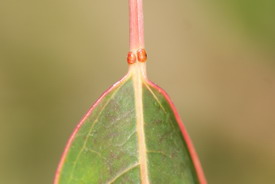 大戟科.山烏桕Euphorbiaceae. Mountain Tallow tree (Sapium discolor) |
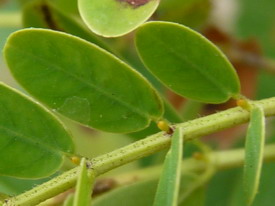 蘇木科.黃槐決明 Caesalpiniaceae: Sunshine tree (Cassia surattensis) |
|
作者: Leon Lau, 譯者: Mary Chung facebook群組, s94096507@gmail.com |
|
| 下一篇 迴響 | |